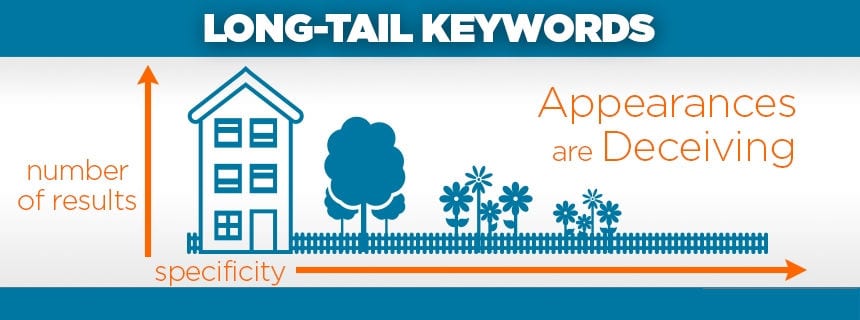It’s no secret that some subject matters are inherently difficult to rank well on Google because larger companies tend to dominate the search results pages due to massive marketing budgets. For many banks and credit unions, coming up with an effective SEO strategy gets stunted due to this very issue, especially when an FI’s SEO strategy is built upon using “header” or broad, short keywords.
Unfortunately, since those “header” keywords are the easiest to identify, many financial institutions are falling into the trap of using and re-using the wrong keywords on their site. For example, while it’s probably the subject of many pages on your website, the likelihood of your smaller financial institution ranking on “mortgage loan” is extremely low no matter how much you optimize for that keyword.
Not only is repeatedly optimizing for one keyword frowned upon by Google, larger banks and credit unions have most likely commandeered the first three pages of results for “mortgage loan,” which is why your FI should think about adopting an alternate SEO strategy—one that revolves around optimizing keywords for a specific niche.
Improve Search Engine Visibility with Long Tail Keywords
Long tail keywords, by definition, are usually longer and more specific than your typical keywords and, though they have a lower search volume, long tail keywords have a much higher conversion rate because of their specificity. These parameters make it much easier to rank well for a specific keyword but because they eliminate over half the search population, they shouldn’t be the only factor in determining keywords for your specific SEO strategy.
To make your organic search strategy as effective as possible, I think it’s important to have the majority of your target keywords be something I like to call “interactive keywords,” which are somewhere in between header keywords and long-tail keywords. Investing in content that emphasizes interactive keywords will not only boost your SERPs and improve your bounce rate; it will make sure you’re attracting readers and customers when they are most open to change.
By promoting your knowledge and services during the initial stages of the home buying process in lieu of when they are applying for a mortgage loan, you’re exponentially improving the chance of them bookmarking your page or pages for later. The best websites I see answer questions for me before I know I have those questions.
HOW TO BUY FIRST HOME → MORTGAGE LOAN CHECKLIST → MORTGAGE LOAN
Once you are aware of your SEO niche and the keywords that complement your SEO strategy, it’s time to start creating quality custom content. After all, what use is great search traffic if no one is staying on your site, right? If you already have the content, make sure it’s up to snuff—meaning no grammatical errors, no formatting issues and up to date examples. All of these things are the building blocks of strong content and ultimately determine how people will behave once they land on your site; a reader’s behavior on their search’s landing page greatly impacts your Google search authority and your site’s bounce rate.
Search Results Are Half the Battle.
Questions about identifying keywords for your site or solidifying your site’s SEO strategy? Let us know!


